The Power and the Fury: Victor Santos on Furious
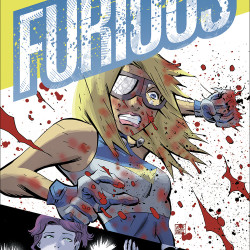
It’s likely that I first encountered Victor Santos’ work as many of you reading this did: In the pages of Mice Templar, when he replaced co-creator Mike Oeming as the artist on that series. And I imagine that many of your own first reactions mirrored mine when, with but a glance at his work in those first few transitional issues, it was patently obvious that Mike and his creative partner, writer Bryan J. L. Glass, had found in Victor not only the perfect artistic replacement for Mike, but also a vital and valuable creative foil for Bryan. Subsequent issues only confirmed those early impressions, even while Santos’ considerable skills as a visual storyteller enabled him to truly make his own unique mark upon that title.
I also imagine that you shared my delight in learning that Victor had somehow found enough time and energy to create a whole ‘nother unique project of his own. That endeavor, the webcomic Polar, is currently in the midst of its second major story arc, while the first was recently released in print by Dark Horse Comics as Polar: Came from the Cold.
And now there’s yet another reason for fans of great comics everywhere to celebrate. That’s because this month brings the debut of Furious from Victor and Bryan. This new ongoing Dark Horse title marks not only the first creator owned book from team Santos-Glass, but also serves Victor’s debut as a superhero artist.
Sounds like the charmed life, right? And yet, as he reveals below, but for a tragic twist of fate, Furious would have been drawn by another artist entirely.
How would you describe Furious, be it the series or its lead character, to someone who hasn’t encountered either yet?
It’s a superheroes book in a world where she’s the first superhero, (and it deals with) the world of the famous, the reality shows and the social networks. It’s an adult superheroes book in a good way, where “adult” means ambition and feeling like telling a good story in an original way—a story full of adventure, thrills and action but talking about learning, redemption, growing, and how we fall and rise again.
Where’d all this come from, and what role did you play in its creation and development?
Furious was Bryan Glass’s dear project ever since he read Daredevil: Born Again, so I came really late. But I’m a fan of the genre and when, sadly, the artist chosen by Bryan, Josh Medors, passed away, I was offered the chance to draw it.
I joined under the condition of working from zero, and never saw any previous work because of my respect for Josh—despite the fact that, sadly again, I never meet him—and my own freedom. And my task was to add my own point of view about why superheroes can be so cool.
Well, why take on this particular project, and why now? Was it an easy choice to make, to tackle this book, one with such a particularly bloody-minded conceit at its heart—or did you have any initial reservations, professional or even personal, about doing it? And if you did, what helped you overcome that hesitancy?
Well, first I loved the chance of making superhero comics in the US. This is my first superheroes book, and even one graphically created by me, a creator-owned book. I love to play with the visual aspects of storytelling and this genre has infinite possibilities. But after all these years working with Bryan, I have enough familiarity with him that even if, maybe, I wasn’t the suitable artist, I would have respected Bryan’s final rejection.
Of course as an artist I have my doubts and insecurities, because a lot of people have a specific understanding about what is the “correct” way to draw superheroes. I love cartoon style and I’m not an artist of classical anatomical skills. My best efforts are in the areas of composition and storytelling, these are my weapons. So I don’t know how the readers will react, but I know I have my own manner to tell stories, and when I have doubts, I take refuge in it.
What unique challenges does this series offer that you’ve not encountered before?
After decades of superhero books, it’s difficult to portray a new view of a human flying!
I’m trying to show new ways to tell a superhero story, and how to visualize their powers and the fascination they generate. The most important thing is how I keep the action flowing over the page, even if I am drawing a quiet conversation.
I have other challenges, including the reality of US cities, because I’m not an American citizen. Yes, we are globalized, and we buy the same clothes and watch the same movies, but we still have little differences in the quotidian life and I’m always alert. Luckily, with the internet it really is easy to research.
What about the violence that is inherent to the genre? What kind of challenges might that pose?
For instance, I imagine that the question of how to effectively portray that level of physical violence and collateral damage without pandering, being overly staid, or turning it all into an exercise in torture and snuff porn is a concern that you had to give some thought to.
Yeah, I remember that scene of the first story, showing the two abused youngsters chained; maybe it’s the hardest scene because Furious, as our heroine, faces some painfully real challenges.
It was disturbing because it’s a scene where the reader must react with disgust, I worked hard on how to show it, and the final inking, creating dirty textures. It was terrible, because I think the scene works really well graphically, but just because I was using my skills, all my knowledge about creating unease and disgust (in the reader). At the same time, I didn’t want to make a show or take delight in it. It’s really difficult to find a balanced point.
This was a real concern, how to balance the level of violence.
Other than that, and maybe the most important, was to find again a balance, but this time a balance between the real world where Furious lives—our real world—and the epic abstraction of the superheroes genre.
Think on the two extreme points, maybe Kick Ass in one corner and Bruce Timm’s Justice League in the other corner. Trying to follow the spirit and the heart of Bryan’s concept, it was necessary to feel the world of Furious as our world, but as a place where these super heroic miracles can happen.
Are you worried about going too far with your portrayal of that level of violence…and how do you balance that with your need as an artist to push yourself and the medium while exploring this subject visually?
Yes, I’m concerned about how we show violence. In my Polar webcomic series, the violence has a high level. It even has gore scenes, but plays on a different ground, a world of stylized noir design. It’s almost abstract like the lack of realism of a John Woo shoot-out.
Furious happens in our world and the violence must be raw. I must be honest showing it but I don’t want to take delight. At the same time I think a graphic detailed violence doesn’t always work in superheroes book.
One of the graphic solutions I found was showing the blood as a solid color. If you read the book, you will observe tones and degrees in the coloring, but the blood appears as a solid red tone. I think this resource helps to create a slight distance and focuses the attention on the really important things, the story and the character. It works better than if I detail every splodge of blood.
You and Bryan have worked together for the quite a few years on Mice Templar. But I was wondering if there was any particular moment early on when you realized that you two really did complement each other creatively?
I think since the beginning I understood Bryan and I work together really well. He writes very long scripts, with detailed descriptions of how the character feels in every moment of the story, and not only in outstanding moments. You really can see the emotional path of every character. And for an artist this is tremendously useful because you can fix the tone immediately, and this tone is my guide in every stage of the artistic process, from the composition to the coloring.
What are some of the other reasons that you enjoy working with Bryan? What makes him a good creative partner, and what does he bring to the table that really engages your imagination and enthusiasm?
He’s a source of energy! And a motivating guy. I’m very lazy writing email, but he doesn’t care to spend time to explain what he has in mind with the book and the direction of the series. At the same time, he’s a great director and helps a lot with the logistic problems of the book. He knows about composition, lettering, editing, etc. That it makes the process fluid.
How do you usually start working on an issue? Do you sit down and read the entire script through before you put pencil or pen to paper, or do you often start roughing things out and making notes during that first reading?
I receive a complete script, so I print it and read. Meanwhile, I’m drawing stick figures, really rough, explaining to myself what’s happening. I write also little notes, things like “This scene could work with a shadowy inking” or “maybe I could split this panel in two.”
After that, the usual stages are pencils, inks, and in this case, digital coloring, with Bryan, and with (my Dark Horse editor) Jim Gibbons and (assistant editor) Spencer Cushing talking and planning and suggesting, along with my own thoughts, in every phase. We must work quickly, but we don’t advance if we are not satisfied with every destination.
You mentioned that you’re working from detailed scripts with Bryan. Which made me wonder if you had a preference between the two? Why? What about that approach works for you?
Since I began in the US market, I’ve worked mainly with the previously dialoged and page to page/panel to panel script. It works for me because I need to know what they are saying for the facial expressions. But, at the same time, I always had freedom to split or join panels, change a suggested scoop for another, of course always discussing it with the writer and the editor.
What about creating the actual art? What’s your usual approach to creating a page of story?
I must say I don’t like doing the storyboards, I feel like I’m repeating the work. I like to approach the big white board directly and freshly.
I ponder a lot about the storytelling and the composition when I’m doing quotidian tasks, washing the plates or in the line of the supermarket. I try to visualize the page like a unit, thinking on the final effect, with color.
Then, after all this inner process, I jump to the page and I change a lot of things! (Laughs) But this previous process helps me.
How about covers and splashes? Do you use the same mindset and approach to designing and drawing a cover or splash page as when you create a page of storytelling, or do you approach those in completely different ways?
Yeah, it’s different and harder for me. And in the comic-book world, we used to be more conservatives in these aspects, so again I try to find a balance between taking advantage of this space and the legibility and the spirit of the story. In regard to the cover, there is the commercial factor too, so I have a lot of arguing about this because I want to do crazy and wild things! (Laughs)
What do you get from doing Furious that you’ve not gotten from working on Mice Templar or your other projects?
Mice Templar moves in an organic territory—animals, forests, rocks, fur and water. The storytelling is really wild. I never use a ruler for the panels, sometimes I don’t even use traditional panels, the action flows over the page without pause. I have a lot of freedom in the textures and the anatomy, too.
Furious plays with the straight lines of the buildings, the stylized icons of the costume, the screen frames. The inking is cleaner. I try to play with vertical and horizontal panels or repeating square panels, searching for a cadence.
You see Mice Templar from above; meanwhile you see Furious from down below. I find the great aspect of working on such different books is the chance for experimentation.
How about making art, in general? What do you get from doing that?
For me, the most important thing is the search for an exciting way of telling a story. I love to reinvent my own art, to make every series a different experience, for me and for the readers who buy my work. I don’t want to draw by the same way I did five years ago, and I hope to be a different—and better!—artist in five years.
That’s the reason I love artists like Matt Wagner, Frank Miller or Jim Steranko; you have to take their books (on their own merits,) thinking “what he’s going to do now?” (These artists thrive on) giving to every book its own personality and at same time, feeling this look and storytelling are the most appropriate.
What do you hope readers get from Furious? How about your work in general?
I want to encourage to superhero readers to buy Furious and other creator-owner titles. There are new and cool ways to tell a superheroes story. I think this genre has a long life and is a way to tell a great story, and just for this reason we cannot repeat a thousand times the same ways.
I want to surprise the readers, making different things like the Mice Templar, Polar: Came from the Cold or Furious.
Anything else you’d like to add before I let you get back to the boards?
I’m very excited about the variety of projects I’m involved in this year.
I hope to create new Furious stories, because she’s a character who will grow and expand her universe. This is just the beginning. I’d like to thank our readers for their support, and I hope to make new friends with this exciting project.
At the same time, the first season of my noir webcomic Polar has been published by Dark Horse as a graphic novel titled Polar: Came from the Cold, while the second season—both seasons are independent stories—continues with regular updates on the net.
And of course, Mice Templar will finish this year with an epic rising. If you like the sophisticated fantasy genre, even if you’re not a fan of the “funny animals” genre, I’m sure you enjoy these books.
This interview is © 2014 William M.S. Baker. All rights reserved.
Mice Templar, Polar: Came from the Cold and Furious are TM & © 2014 Victor Santos, Bryan J.L. Glass, Michael Avon Oeming or their respective owners. All rights reserved.

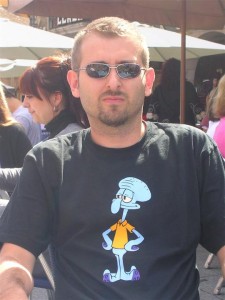

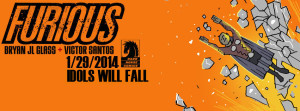
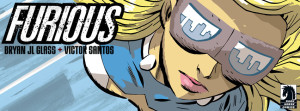

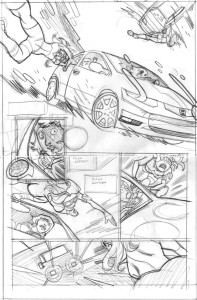
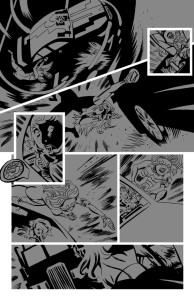

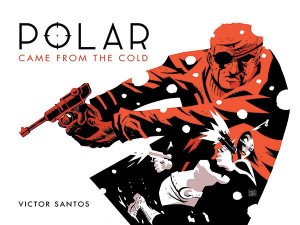
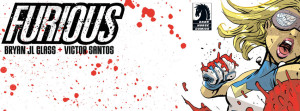



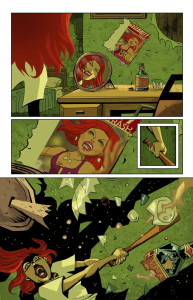
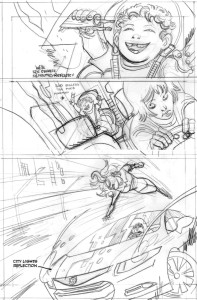
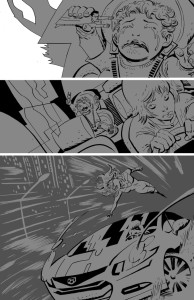
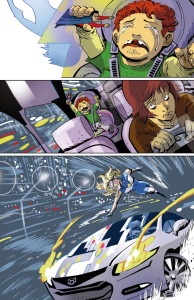
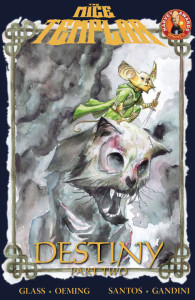

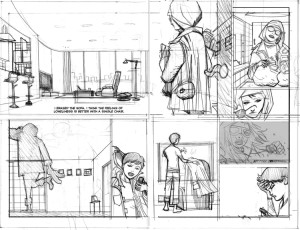

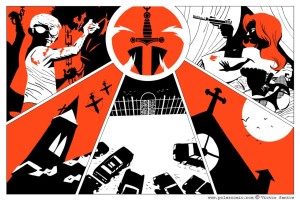
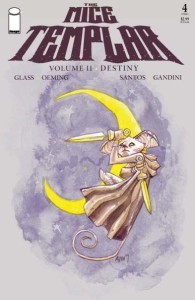
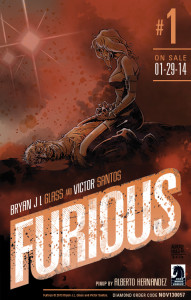
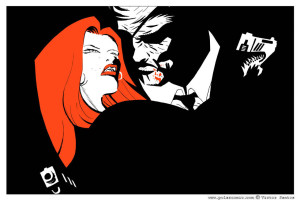
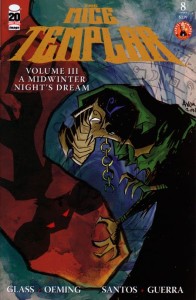
Leave a Reply